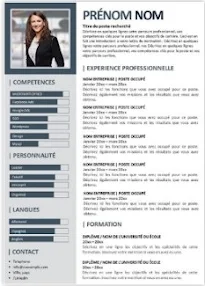Why a Biodata Matters:
Think of your biodata as a mini-resume, highlighting your key qualifications and achievements. It often accompanies your resume, providing additional details and tailoring your candidacy to the specific job requirements. While resumes focus on work experience, biodata can delve deeper into your academic background, skills, and personal qualities.Your biodata is a valuable tool in your job search arsenal. By following these tips and showcasing your unique value proposition, you can create a biodata that gets noticed and paves the way for your dream job.
Hooking the Reader:
- Start with a powerful summary: Briefly introduce yourself, highlighting your strongest assets and career goals relevant to the position.
- Quantify your achievements: Use numbers and data to showcase your impact in previous roles. Did you increase sales by 20%? Streamlined processes, saving the company time and money? Quantify it!
- Tailor your content: Adapt your bio-data to each specific job you apply for. Research the company and position, emphasizing relevant skills and experiences.
Crafting a Compelling Bio-Data:
- Personal Details: Include your full name, contact information, and links to your professional online profiles (LinkedIn, portfolio).
- Education: List your educational background, focusing on relevant degrees, certifications, and coursework.
- Work Experience: Briefly outline your professional history, highlighting achievements, responsibilities, and skills used in each role.
- Skills & Abilities: Showcase your technical and soft skills relevant to the job description. Use strong action verbs and specific examples to demonstrate your proficiency.
- Additional Information: Include any awards, volunteer work, or other relevant experiences that showcase your well-roundedness and suitability for the position.
Pro-Tips:
- Proofread meticulously: Typos and grammatical errors create a negative impression. Ensure your bio-data is polished and error-free.
- Keep it concise: Aim for one or two pages, depending on your experience level.
- Use a professional format: Choose a clear and easy-to-read layout with consistent formatting.
- Save in appropriate formats: Save your bio-data in both PDF and Word formats for different application requirements.
By following these tips and optimizing your bio-data for search engines, you'll create a powerful tool that grabs attention, showcases your qualifications, and increases your chances of landing your dream job. Remember, your bio-data is your first impression, so make it count!
Bonus:
- Consider including a call to action at the end, inviting the reader to contact you for an interview.
- Link to your online portfolio or website for further information and showcasing your work.
By implementing these strategies, your bio-data will transform from a simple document into a powerful marketing tool, propelling you towards your career goals.

















0 Comments: